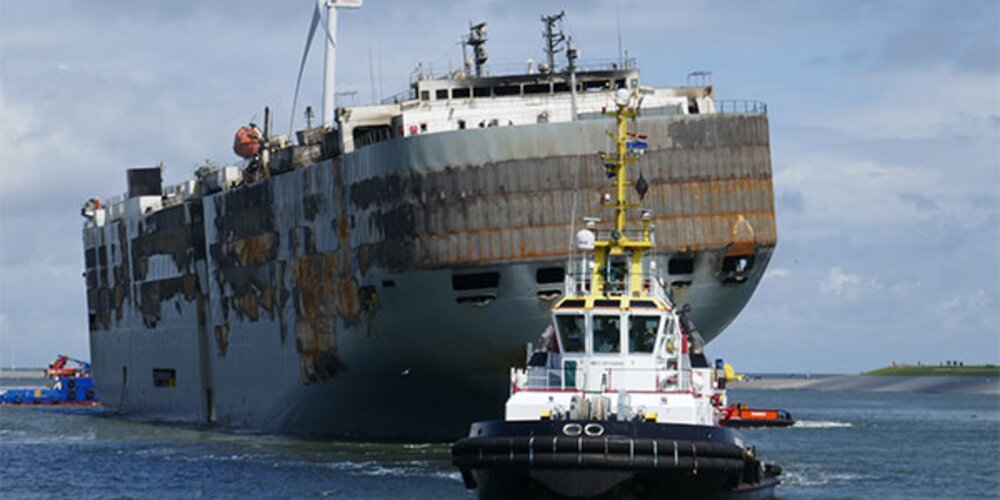Browse our services
Explore how Brookes Bell can help you
Find an expert
Meet our team, find and expert and connect
Contact us
Get in touch, we're here to help

When a fire breaks out on board a vessel, carrying out a thorough investigation is an important step once it is safe to do so. While conducting an investigation soon after the incident can assist with evidence gathering, it is not always necessary and valuable insights can still be obtained weeks later. While the scientific process for such incidents remains consistent, each investigation presents a unique set of circumstances that can influence the availability of evidence and the way an investigation unfolds.
Brookes Bell’s fire investigation team applies the same rigorous, impartial methodology to every case. As Scientist and Fire Investigator, Kaitn Walker, explains, the primary objective is always the same: to determine the cause of the fire through evidence-based analysis.
“It’s always the same process, but each case comes with different lines of enquiry depending on the evidence available,” she says. “We work from the facts towards the most likely cause. A crucial part of any investigation is also eliminating possible causes and disproving hypothesis to rule causes out.”
The investigation typically begins with a review of all accessible data: voyage information, Cargo Manifests, Logs, Witness Statements and environmental monitoring. From there, investigators develop and test hypotheses, aiming to establish the fire’s origin, cause and contributing factors.
“If you're working on a case where the fire originated in the engine room, for example, you’ll be looking at how those systems performed. If it’s a cargo fire, you may be exploring the characteristics of the cargo and the stowage plan,” Kaitn explains. “The direction we take is always shaped by the evidence.”
Access to documentation can vary across cases. In some instances, investigators are able to review onboard records and gather information directly from the crew. In others, particularly where fire has damaged key systems, or where information is held by third parties, there may be gaps.
“It can make a difference to the depth of detail you can work with at the start,” Kaitn notes. “We always aim to build the fullest picture possible, but sometimes you’re working around missing documentation, or evidence that was lost in the fire itself.”
This variability does not affect the scope or standards of the investigation. Instead, it calls for flexibility in how investigators approach each case, adapting their methods to the evidence available while maintaining a consistent, impartial process throughout.
Brookes Bell’s fire investigation team operates under a clear principle: follow the evidence. The aim is always to establish causation through robust scientific and technical analysis. This is where the firm’s multidisciplinary structure provides significant value. Whilst Kaitn and other members of the fire investigations team are highly qualified Chemists, when the investigation might need input from other experts, our investigators collaborate with Engineers, Metallurgists, Master Mariners and Naval Architects, all of whom have specific fire investigation experience, to build a comprehensive understanding of the incident.
This integrated approach ensures that the final report maintains technical accuracy and can stand up to robust legal scrutiny. The findings are presented clearly and objectively, offering practical insight and recommendations where appropriate.
In a field where every case is different – whether due to fire conditions, the availability of evidence or operational complexity – Brookes Bell’s consistent and methodical approach remains a trusted standard across the maritime industry.